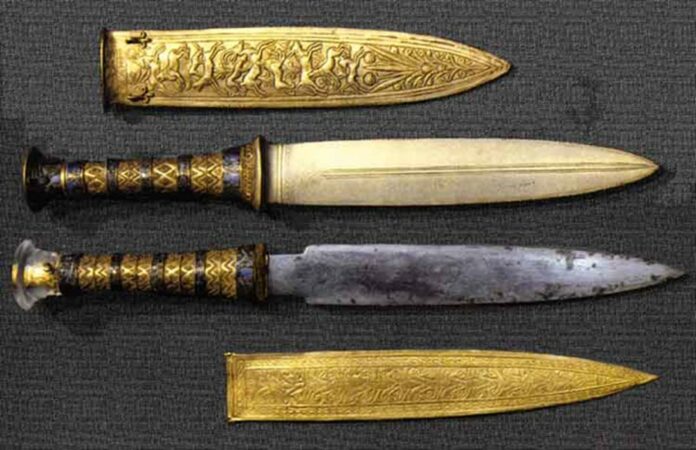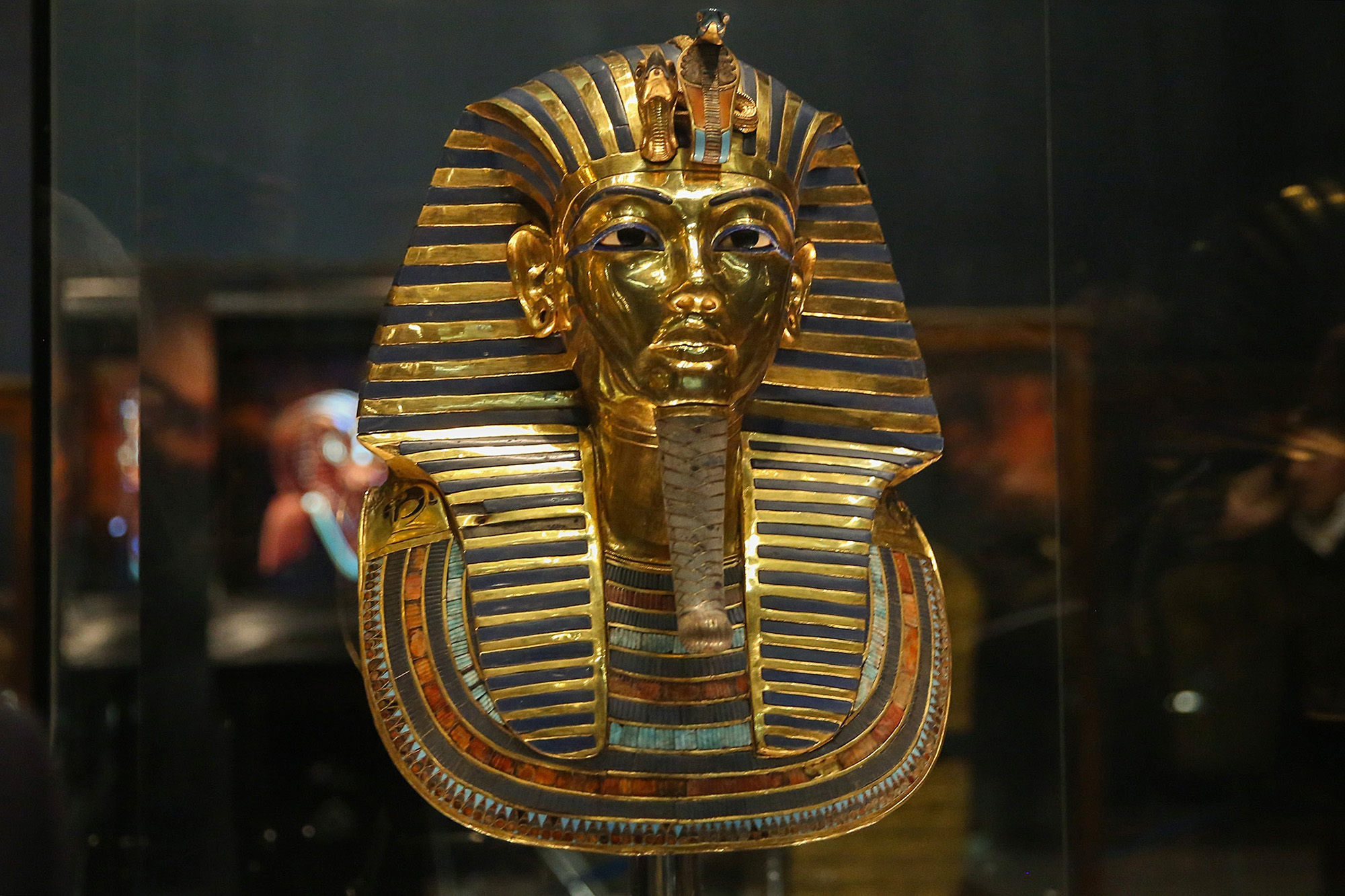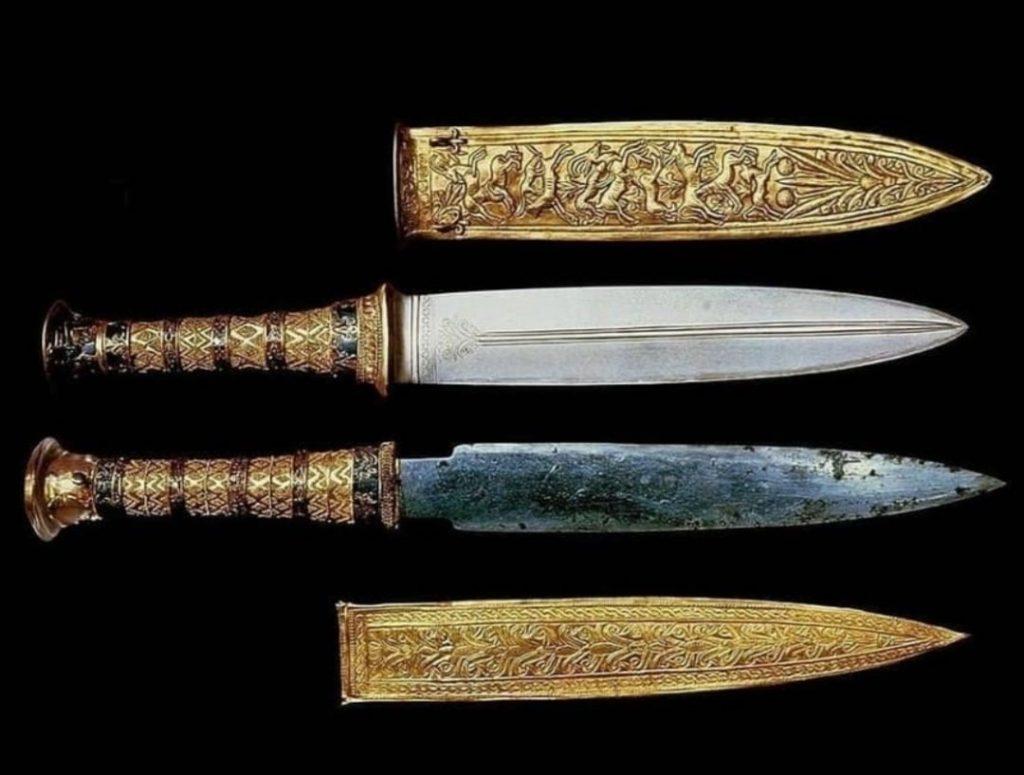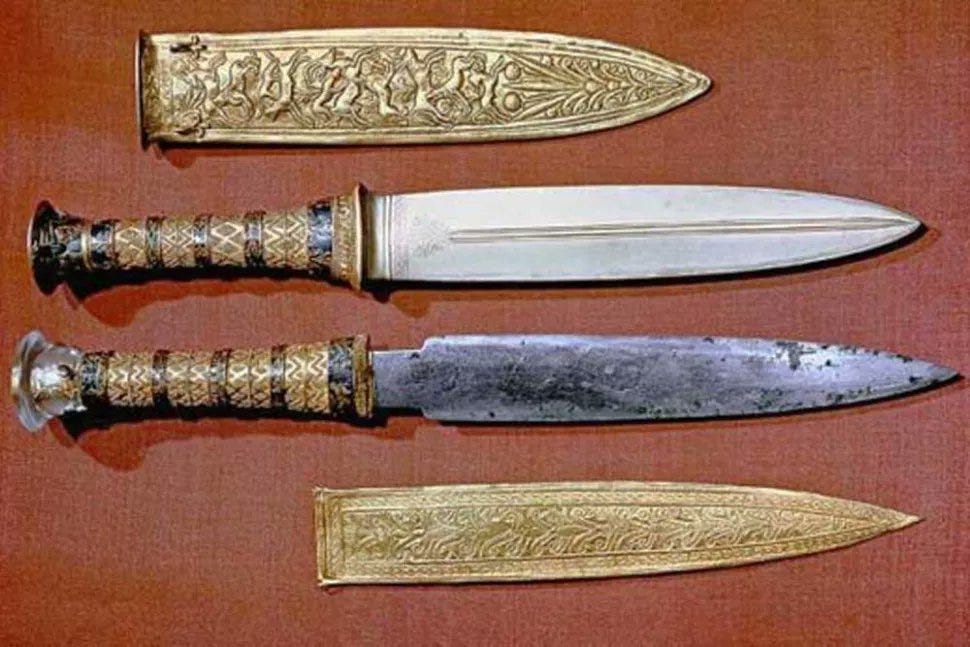The tomb of Tutankhamun, one of Egypt’s most renowned pharaohs, has captured the attention of historians and archaeologists since its discovery in 1922. Referred to as KV62, this burial site was uncovered by a team led by Howard Carter in the Valley of the Kings, situated on the west bank of the Nile near Thebes (now known as Luxor). Among the myriad treasures hidden within this ancient resting place was an extraordinary dagger that has piqued scholarly interest due to its unique material. This enigmatic artifact, now recognized as Tutankhamun’s meteoric iron dagger, continues to fascinate people worldwide with its origin that is, quite literally, from beyond our planet.
The Discovery of Tutankhamun’s Tomb

In 1922, Howard Carter and his team achieved one of the most pivotal archaeological finds of the 20th century: the tomb of Tutankhamun, an Egyptian pharaoh who reigned towards the conclusion of the 18th Dynasty. This tomb lay concealed beneath debris from the excavation of KV9 for Pharaoh Ramesses V and had remained undiscovered for over 3,000 years. Inside, the tomb held an astonishing total of 5,398 artifacts, which included a solid gold coffin, a ceremonial mask, thrones, archery equipment, trumpets, and a lotus chalice. Among these treasures was a collection of iron blades, including the now-famous iron dagger.
The Significance of the Iron Dagger
The iron dagger discovered in Tutankhamun’s tomb was far from an ordinary weapon. It featured an ornate golden sheath, skillfully crafted by an ancient metalsmith. The handle was made of exquisite gold, adorned with cloisonné and granulation techniques, and topped with a pommel fashioned from rock crystal. The golden sheath showcased intricate designs, one side displaying a floral lily motif while the other exhibited a pattern of feathers culminating in a jackal’s head.

Iron artifacts from the 18th Dynasty are exceedingly rare in Egypt because the technology to produce high-quality iron was not widely available at that time. Most iron finds from this era are of inferior quality, making Tutankhamun’s iron dagger an exceptional discovery. The superior craftsmanship and the relatively crude nature of other blades found in the tomb suggest that this dagger may have been imported, possibly as a royal gift from a neighboring kingdom.
Diplomatic Relations and Iron Gifts
Diplomatic documents known as the Amarna letters, dating back to the 14th century BC, reference royal gifts of iron bestowed upon Egyptian pharaohs prior to Tutankhamun’s reign. One letter indicates that Tushratta, the King of Mitanni, sent iron items to Amenhotep III, who is thought to be Tutankhamun’s grandfather. These records hint that the ornamental dagger could have been among the esteemed gifts exchanged between these ancient societies.

The Blade’s Meteoric Origins
Since the 1960s, scientists have speculated that the iron in Tutankhamun’s dagger could originate from a meteorite due to its elevated nickel content. This hypothesis was substantiated by a 2016 study utilizing x-ray fluorescence spectrometry. The analysis revealed that the blade predominantly consists of iron (Fe), with 10.8% nickel (Ni) and 0.58% cobalt (Co), a composition closely resembling that of known meteorites. The uniformity of the metal further bolsters the theory that the dagger was crafted from a meteorite.

Additional research published in February 2022 employed non-destructive two-dimensional chemical analysis to reinforce these findings. This study indicates that the meteorite used to forge the dagger was likely octahedrite, a common structural type among iron meteorites.
Conclusion

Tutankhamun’s meteoric iron dagger is not merely a relic of ancient Egyptian artistry; it also symbolizes the interconnectedness of early civilizations. The celestial origins of this dagger and the advanced techniques used in its creation underscore the sophistication and intrigue surrounding Tutankhamun’s reign. As scholars continue to unveil the mysteries surrounding this remarkable artifact, the dagger stands as a testament to the lasting legacy of ancient Egypt and its rulers who looked to the heavens for inspiration in their treasures.

